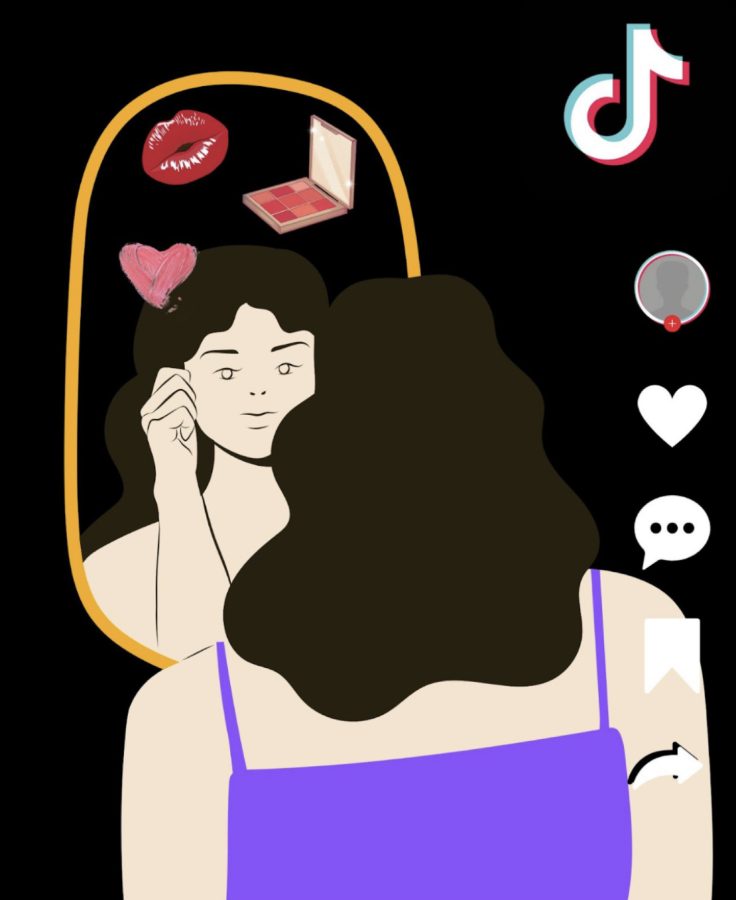Long gone are the days of a picture-perfect social media feed. Unkempt beds, dirty laundry, wild hair and photo dumps have replaced designer clothes and exotic destinations. Rather than displaying flawless, impersonal lives, the younger generation prefers to curate their feed to match their unique interests, quirks and personalities.
Among the leading influencers is internet personality Emma Chamberlain who reigns over her realm of social media among other popular influencers. The YouTube star and model has garnered millions of followers by releasing relatable content. Though Chamberlain’s content ranges from cooking videos to car vlogs, each video features her niche editing style and unique personality.
While some creators like Chamberlain are not afraid to publicly shun makeup, skip a shower, admit to not brushing their teeth, burp in videos or point the camera at unflattering angles, these are not privileges that all creators share.
Rather, as senior Sarah Chen noted, people of color—POC— creators are held to unrealistic standards of perfection and content expectations. “When Emma Chamberlain was rising in popularity, she was labeled as ‘down to earth’ and ‘realistic’ when she told her audience she was burping/farting/not showering—this helped boost her brand,” Chen said. “But if a woman of color consistently did this on screen, it would immediately be deemed unacceptable and disgusting.”
Social media has long shown that two creators, separated only by race, who post similar content and share comparable aesthetics are perceived and treated differently. The infamous, yet controversial, “clean girl aesthetic” is one of the most telling examples.
The “clean girl aesthetic” is one that has not only been popularized by celebrities like Bella Hadid, Kendall Jenner and Haylie Bieber, but taken over by the TikTok community. Defined by a slicked-back bun, neutral makeup, hoop earrings and neutral clothes, this aesthetic is anything but new. Before being popularized by white influencers and celebrities, this style was already thriving in Black and brown communities.
Now, these communities are alienated from the trend. Anyone who breaks the skinny, white, wealthy image is critiqued at harsher levels than those who fit the aforementioned mold. When Black and brown women wear slicked-back hair and gold hoops, it is deemed trashy and dirty.
Senior Anagha Sudhindra observed that, when white influencers claim the look, it is given a new, positive connotation. “Other trends associated with the figure of a ‘clean girl’—nose-piercings, oiling and slicking back hair and turmeric for facials—are all facets of South Asian culture,” she said. “Society views these trends negatively when a South Asian woman performs them, but in a revolutionary light when a white woman performs them.”
Another example of the overtaking and exclusion of an aesthetic is long, complex nails designs. The nail style gained mainstream popularity because of their new appreciation in the white community though they were classified as “low-class” when popular among Black and brown communities.
These double standards are not only limited to social media, but also reverberate in social dialogue.
Black women are victims of stereotypes that negate them as aggressive, ill tempered, hostile and ignorant. At the same time, aesthetics like “clean girl” and “cottagecore” have been reserved for slim, rich, white women.
“Trends like the ‘clean girl aesthetic’ and VSCO are dominated by white women, so white women become the face of these unachievable standards,” Chen continued. “‘Clean girl’ is very much code for ‘white girl’ in my opinion. These are systemic issues that need to be addressed through all platforms and outlets, no matter how uncomfortable they make other people feel.”
In her book “Brown Girl Like Me: The Essential Guidebook and Manifesto for South Asian Girls and Women,” author Jaspreet Kaur explained the hypocrisy of white feminism when talking about South Asian women. “When white women flaunt armpit hair it’s seen as feminist and revolutionary – but on brown women, it’s ‘grotesque,’” she said.
When western beauty standards and influencers are the center of trends and aesthetics, those who fit the standard are the only ones who are celebrated. “It would be so powerful for South Asians if white creators who steal and whitewash aspects of the culture were to at least give some recognition as to where the trend originates from and what the true purpose of the ‘trend’ is,” Sudhindra concluded.
In order to reverse the negative trajectory of aesthetic privilege, trends need to highlight and embrace all people. Rather than coerce individuals into trying to reach an unattainable image of what society deems beautiful, trends need to celebrate the beauty that already exists.









